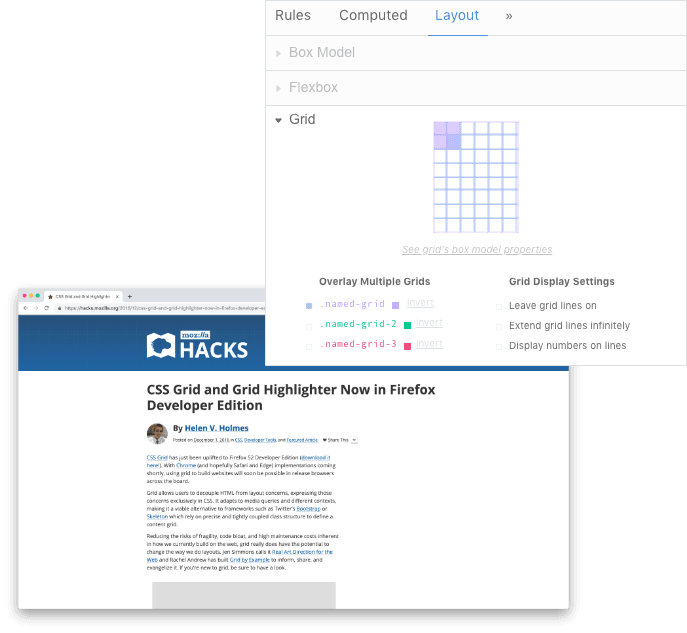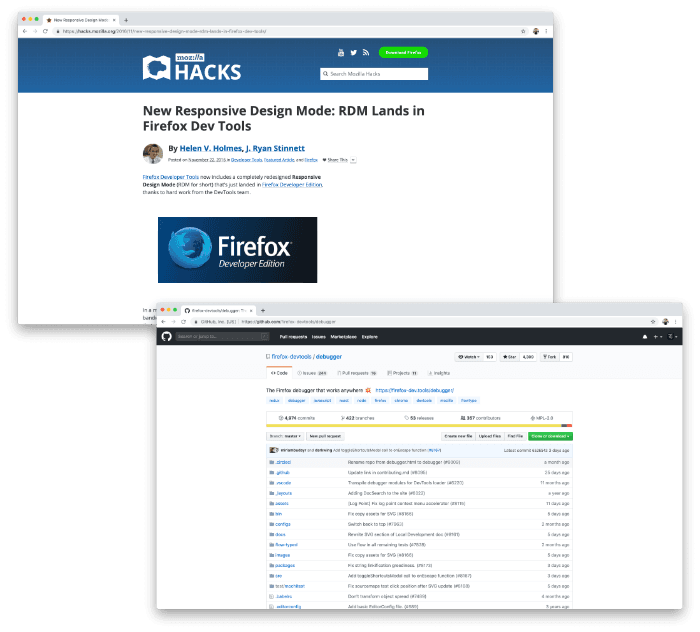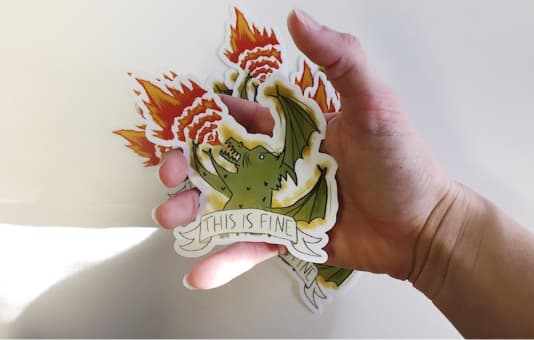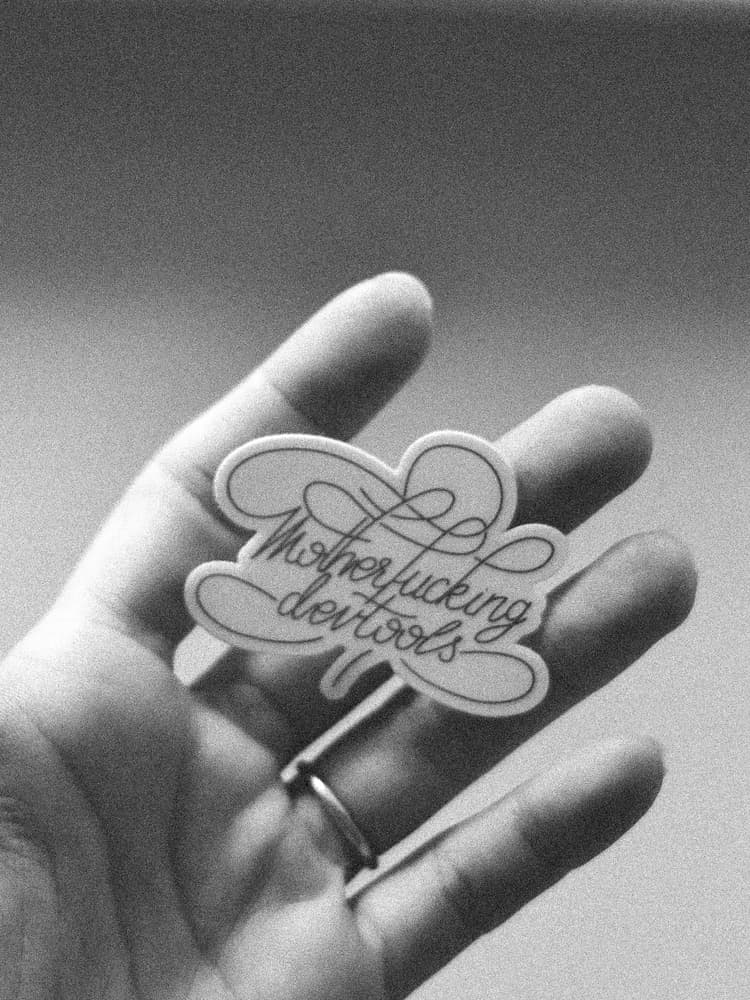In the Fall of 2015 I joined the Developer Tools team at Mozilla Firefox. It was a whirlwind of learning about the complexities of browsers, developer tooling, the people writing our web specs, and open source community.
As sole designer on the team it was unlike any environment I'd ever been in before: Firefox is used by millions of people workwide, and the process for launching and shipping rock solid features (and design for those features) was imperative.
In my time at Firefox I got a very unique look into how people use their browsers, their computers and other devices, and learned a great deal about how passionate people are about the fox program on their desktop.
In my time at Firefox I shipped new color palettes for the Developer Tools, redesigned the panel icons, designed the first iteration of CSS Grid tooling, redesigned theResponsive Design Mode, redesigned the Debugger, all in addition to consulting the developers and brainstorming numerous small usability enhancements. I assisted the User Research team as a fly on the wall for their research on task continuity, spoke at ViewSourc.es thanks to the community team, and facilitated a social media campaign as an illustrator.


